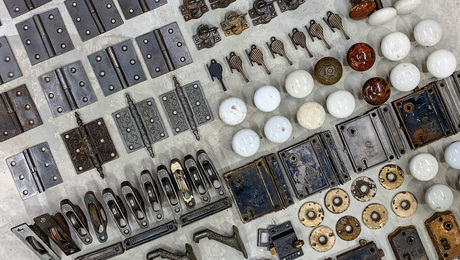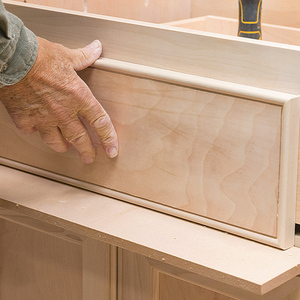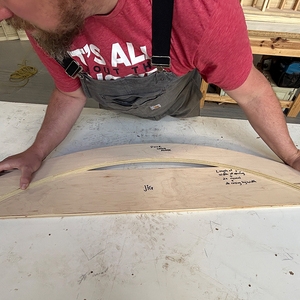Please help with choosing a powered attic ventilator and a whole-house fan… Our house is a 1500 s.f. “L”-shaped ranch with a very low-pitched roof. We have no trees nearby so there’s little shade, and the heat build-up in the attic is fierce in our North Alabama summers. The heat just rolls down from the ceiling and the A/C has a hard time keeping up. In our last house we installed turbines that helped with ventilation, and we also added the whole-house fan to draw cooler air in when temps were moderate. The turbines were great, but not the most attractive addition to the house. With our lower pitch roof, I’m afraid that’s all you’ll see if I use them here. Plus, neither my husband nor I are of an age where we want to crawl up on the roof and cover those things up in winter. (Maybe we don’t need to??) Also, we have really strong winds on our little mountain, and I remember the noise the turbines made when the wind got up at our last house. Right now we’re considering a solar powered ventilator, but don’t have any experience with those. We do have a full south exposure so it’s feasible to use solar.
The house has 3 gable ends and all 3 have a section of the siding cut away with screens behind and these sort of horizontal wood louvers staggered in front of it. We have some eave vents, but not many, and there is no ridge vent. We’ll be replacing the roof this year and plan to add that feature.
Any info as to what to consider and where to place the ventilator(s) and whether we will have enough eave louvers would be much appreciated!



















Replies
Susie,
You do not need a powered attic ventilator. Several studies have shown that they often use more electricity than they save. What you need is better attic insulation, coupled with air sealing work. Once you have the proper insulation depth, the temperature of your attic becomes irrelevant.
To add to what martin said, I'd like to ask a Q:
Is there ventilation at the soffits? (the underside of the horizontal eave overhangs)
Also, read this.
Hey Matt,
Thanks for the reading material; that'll be my project for tonight! I've looked for info on the subject, but really never found anything that looks this thorough. We do have soffit vents, but there are not many. Without actually counting, I'd say we have about 8, if that many. I plan to check that out tomorrow and see how close I came.
It sounds like everyone thinks we really don't need a powered ventilator, just more insulation. That's good news for me..really don't want to use any more electricity than necessary.
I have an whole house fan and love it.
However, it should never be used during the say "time" that the AC is being used. Even if the temp drops at night you are sucking in lost of humidity that the AC has to "fight" to remove.
I like in the Kansas City area and use mine in the spring until about the 3rd or 4th week of June. Then the humidity hits. Then AC only until 2 or 3rd week in Sept.
.
A-holes. Hey every group has to have one. And I have been elected to be the one. I should make that my tagline.
Bill,
Ahhhh, humidity!! I remember it well...Just kidding! I do understand your point about making the AC work harder to pull it out of the air. It's just that it's been so blasted dry here the past 2 years the cow ponds that usually overflow have all but dried up!
When it was over 100 for days and days, it was like being in the desert!
I do love having a house fan, and we generally could use one here up until May. I don't remember ever seeing one until we moved south...they probably have them in the midwest, but no one I know had one!
>> I have an whole house fan and love it.
However, it should never be used during the say "time" that the AC is being used. Even if the temp drops at night you are sucking in lost of humidity that the AC has to "fight" to remove. <<<
Duhhhh...
Hope the hole house fan is a well insulated/sealed one. Most are notorious air leakers when not used. Not normally recommended for people who are actually energy conscious in geographic areas that require the interior air to be conditioned on a regular basis but they are great for climates with 70 degree F year round temps, 30% YR humidity where open windows are the standard modus operandi.... oh - and no combustion appliances in the house... oh-oh - that's pretty close to 3 strikes...
Hey, Matt, don't be dissin' my house fan!!
The one in our last house actually sealed up very well, and I had a gas range also with no problems. I just like fresh air through the house when at all possible. Everyone goes from heat to AC and back without ever opening a window nowadays. I know it's the norm, but it just seems strange to me.
We have weeks here, particularly in the fall, where the temperatures are very moderate during the day and cooler in the evening. I'd just like to be able to bring in the 70-75 degree air to help keep the inside temperature moderate when the sun is out and heating the interior to 85. I know insulation and efficient doors and windows will help with heat build-up, and I'll be insulating soon. But a house fan sure would be a nice option to AC until I can afford the $10,000 to replace the doors and windows.
For any roof ventilation to work properly, it needs to take advantage of the chimney effect. Balanced inlet and outlet vents are necessary.
If you are getting that much heat radiating thru the ceiling, you need more insulation at the ceiling. Blown in cellulose gets my vote for cost effectiveness in this situation.
Back to the venting: My favorite system is soffit (eave) venting coupled with ridge vent. No electricity is necessary and there are no moving parts to fail or make noise.
Now, that being said, your existing system of soffit vents and gable vents might be adaquate to remove the moisture and the added insulation will control the heat as well as reduce your heating/cooling expense.
I'd get the insulation checked first and add more if the existing is inadequate. Then look at changing the venting system when you reroof in the near future.
http://grantlogan.net/
Yeah, I'm sure we don't have enough insulation in the attic. It just barely covers the rafters. If I have insulation blown in, can you suggest a way to maintain some sort of flooring for a pathway in case we need repairs? Do I just leave the plywood floor there and blow the insulation over it? Also, do we need a stop of some sort so that the insulation doesn't cover the soffit vents?
can you suggest a way to maintain some sort of flooring for a pathway in case we need repairs?
Good thinking. I just left the existing catwalks in mine and blew over the top of them. A better method would be to nail a pair of 2x6's or whatever standing up perpindicular to the ceiling joists, blow in between them and add a 2' wide strip of plywood to the top of them.
do we need a stop of some sort so that the insulation doesn't cover the soffit vents?
Yes. Most insulation companies will add air chutes before blowing. If you blow the insulation thick enough and keep your gable vents open, they may be adequate for moisture evacuation without worrying about the soffit ventilation. Heat evacuation becomes a moot point with effective enough insulation.
http://grantlogan.net/
"Because I really want to live in a country where the poor people are fat. "- Unidentified Indian Immigrant when asked why he wants to come to America
Edited 1/25/2008 4:16 pm ET by seeyou
Uh.. Color me stupid since I'm just a know-nothing DIY homeowner but aren't we talking about two separate things here? If I remember my basics, an attic fan is to address/supplement attic ventilation and heat build up in the un-conditioned attic space. A whole house fan is used to provide additional ventilation in the conditioned living space by drawing in cooler outside air into the conditioned space. Although the whole house fan vents to the attic, it wouldn't be used during the heat of the day when the heat build up in the attic needs to be addressed.I defer to the more knowledgeable about addressing the attic heat build up.
Hey Diane,
Good graphic...totally correct about 2 different things. My concern was about the necessity for mechanical ventilation for the attic only to dissipate heat build-up, but so far the feedback is in favor of insulation. I'm going to try the insulation and will let everyone know the results.
Susie - we have an inexpensive, thermostatically-controlled attic fan (24" diameter) that blows out a louver at one end of the attic - there is an intake (window with screening instead of glass) at the other end.
This arrangement dramatically reduces the attic temperature, assisting the A/C. There are no soffit or ridge vents (none necessary).
Jeff
Jeff,
Your anecdote is interesting but unscientific. Studies have shown that powered attic ventilators use more electricity than they save in lowered air conditioner run-time. Moreover, several studies have shown that powered attic ventilators can increase energy costs by pulling conditioned air through ceiling air leaks into the attic. Unless your ceiling is perfectly air sealed, you don't really want to be depressurizing your attic. Sure, your attic is cooler, but your electric meter is spinning as fast as ever -- and in some cases faster.
Martin,
While the arrangement Jeff has would suit my situation just fine, I see your point about pulling conditioned air into the attic. This house is an owner-built (not us, or we wouldn't be having this disussion) project, and I'm sure nothing is sealed up very well. One day when we're all feeling like a good laugh, I'll post some pictures of the window installation!
I guess what really got me started thinking about the ventilator was the fact that the AC can run all day and not bring the temperature inside the house to a comfortable level once it gets above 95 outside. It was somewhat better on the rare days we had some cloud cover. On those days last summer when it went over 100, it could get pretty miserable in the house, even with ceiling fans. On those really hot days you could just raise your hand and feel the heat from the attic.
The air temp coming out of the AC seems plenty cool, but we'll be having the system checked in another month. I think we just reached the point where the heat transfer from the attic was so bad the AC was overwhelmed. I'm really hoping the extra insulation helps.
If not, well, turbines are noisy and unsightly, but they don't require electricity!
<Your anecdote is interesting but unscientific.>
Keep tring to tell my old dad that (retired ME). His gable fan in his '60s brick ranch sounds like an airplane taking off when you walk past. In fact, I got his old 2' fan as my shop fume ventilator, just 'cuz he wanted a bigger one.
He is impressed with how much cooler his attic is, but he's got a 2-3 yr old 90+ furnace and 14 SEER AC. They use attic storage, so I guess it's useful
Forrest
Thanks for the info. This could suit my situation just fine.
One last thing to consider: With any type of venting, passive or active, it won't cool the attic space any lower than the outside temp. If it's 95 degrees outside, the attic is not going to get any cooler than that. A good insulative barrier is your best lie of defence.
Also, I had a gable fan wear it's bushing out in the middle of the night. So much racket that it had to be dealt with immediately. http://grantlogan.net/
"Because I really want to live in a country where the poor people are fat. "- Unidentified Indian Immigrant when asked why he wants to come to America
Good idea about adding the 2x6's. I can just take up the existing plywood and put it back after the insulation goes in. Thanks for all the information...can't wait to get started and get this problem fixed. Who would have thought insulation could be so exciting???
I agree w/ what everybody said about more insul. I pumped 12" of cellulous into my attic and it made a big difference winter and summer.
If after you do the insul and still feel you need some ventilation there is this option:
http://www.solarelectricsupply.com/Solar-Attic-Fan/index.html
http://www.rewci.com/sopoatfanfrs.html